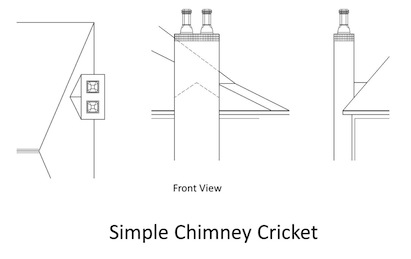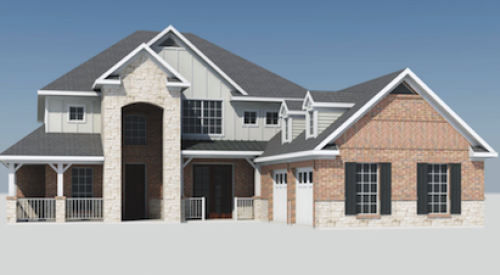Whether you call them crickets or saddles, the little patch of roof that is bridging water past a chimney or other element obstructing water flow is one of the hardest things for most framers to get right on the roof. Why is this?
It starts with the plans. Many times crickets are left off the drawings and not clearly illustrated. If the cricket is not shown on the roof plan and in elevation than there is a large opportunity it will be missed in actual construction. Also quite often crickets are just not built correctly in the field. Nine times out of ten I will find that a cricket is too shallow or that it does not come out far enough to fully pass the obstruction, leaving a dead spot for water and or snow to collect. When this happens it is only a matter of time before you have a leaky roof, and one thing that we all know is that leaky roofs lead to warranty issues, lost time, and even (insert breathless gasp here) black mold.
All is not lost however, this situation is very easy to fix. Take a look at your plans and study chimney areas and intersecting valleys to make sure the crickets are called off and drawn correctly. Inspect sheathed roofs in the field to see if you can spot any issues. Finally talk to your roofer. Most times your roofer will actually feel good that you asked for his advice and be very helpful ensuring that your roof is built correctly. Win. Win.










